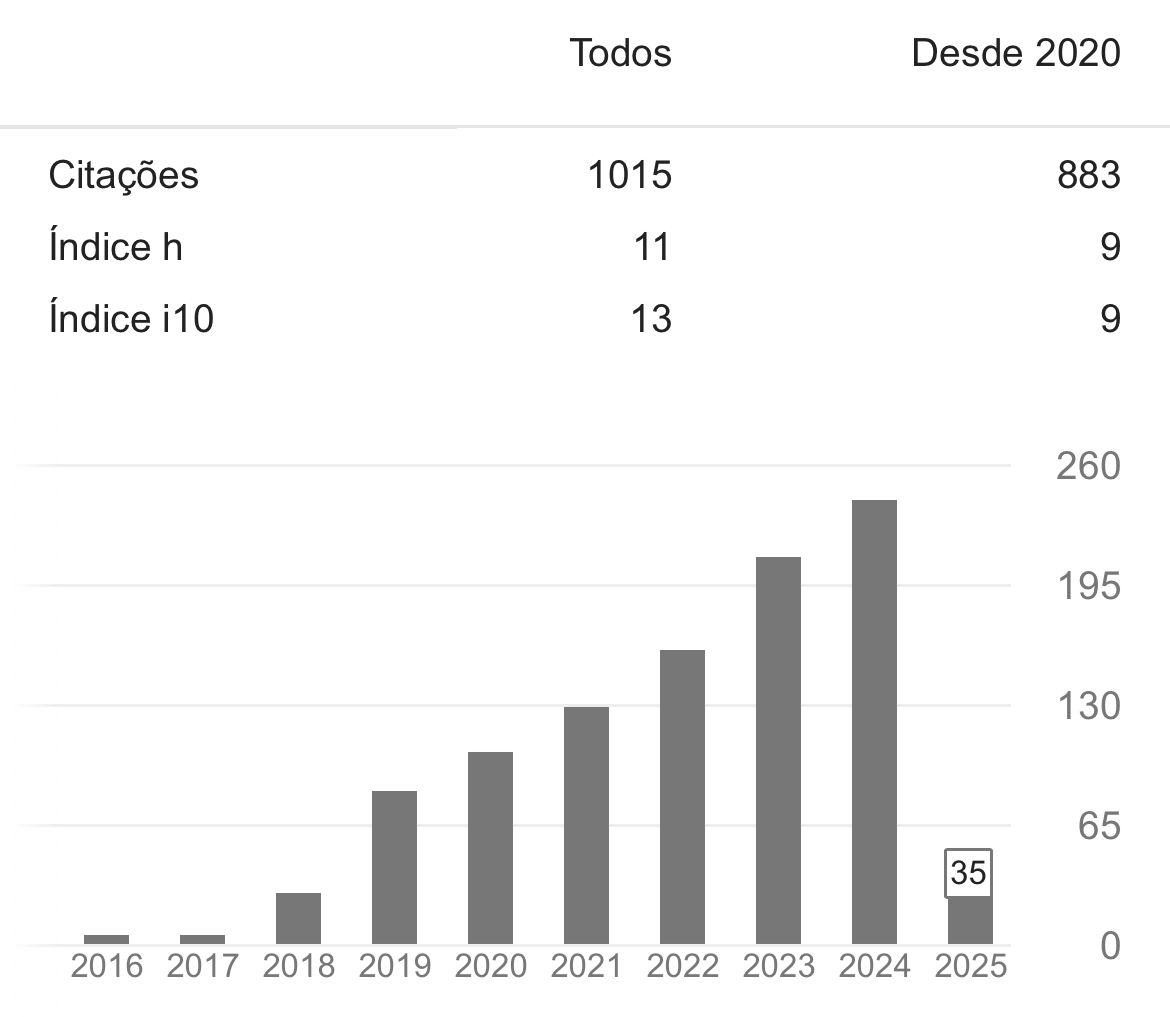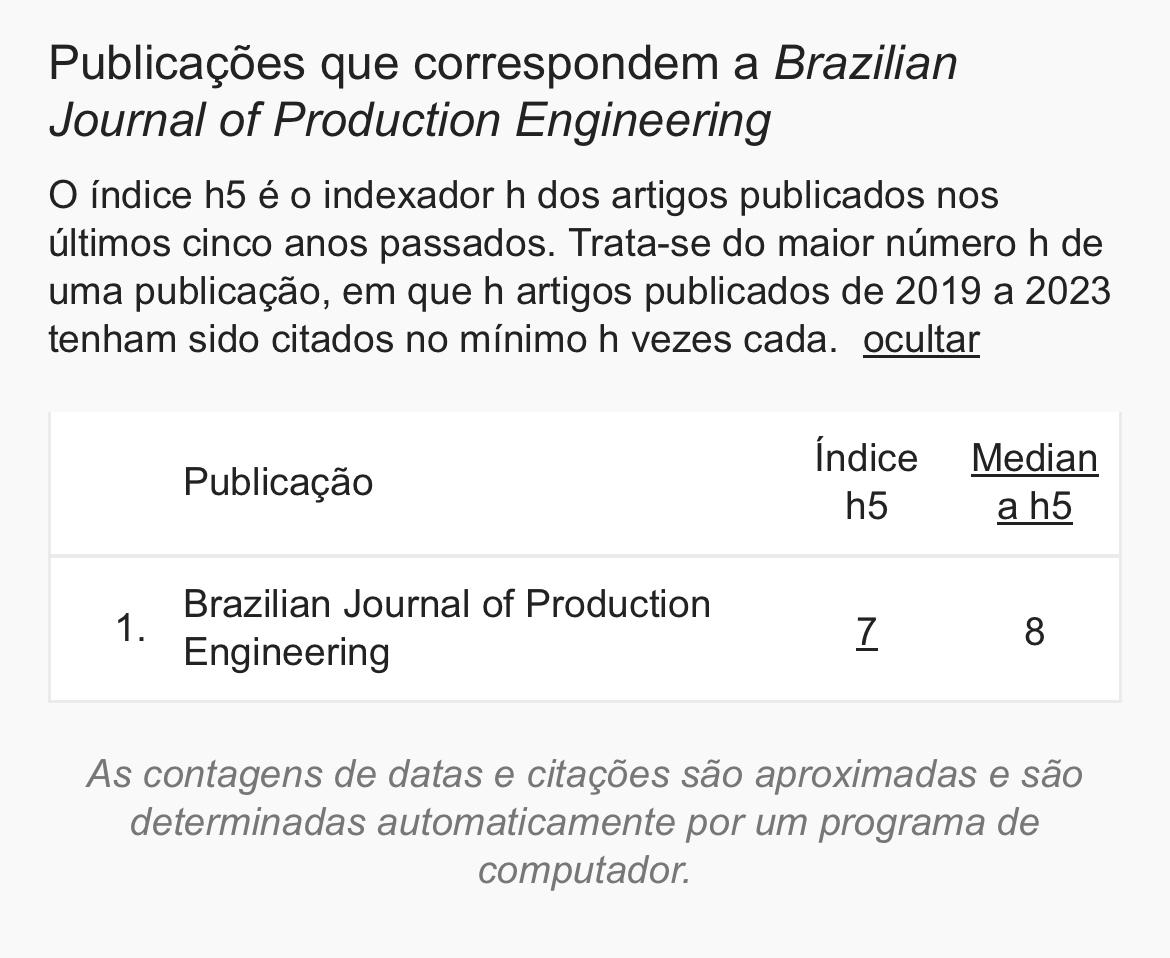SIMULATION LAYOUT PROPOSAL IN A BRAZILIAN TEXTILE INDUSTRY
PROPOSTA DE LAYOUT DE SIMULAÇÃO EM UMA INDÚSTRIA TÊXTIL BRASILEIRA
Keywords:
Layout, Physical Arrangement, Computational Simulation, Textile industryAbstract
The analyzed textile industry has been one of the main branches of production in the city and region for a long time, mainly in the manufacture of lingerie and accessories. Due to the demands of the national economic scenario and the vast local competition, obtaining good production planning and tools that help reduce costs become essential objects for the company to remain in the market. Based on these issues and the lack of knowledge of available technological resources, this work aims to carry out a layout study in the industrial sectors, seeking to reduce the movement and transportation of employees. The research method presented refers to modeling and simulation, using tools such as the IDEF-Sim and the ProModel®computer software, which offers the possibility of identifying inefficiencies in the production process and, based on this identification, proposing improvements in more efficiently using available resources. As a result, there was an improvement in the modified simulated model of more than 45% in the final production of the container, in addition to the reduction in the movement that generated the reduction of employees in the sector, the optimization of the manufacturing space and quality improvement.
Downloads
References
Alves, A. C. (2018). U-shaped cells operating modes: A review and a hands-on simulation comparison. International Journal of Industrial Engineering and Management, 9(2), 87–97.
Apter, M. J. (2018). The computer simulation of behaviour. Routledge.
Bremer, S. A. (2019). The GLOBUS model: Computer simulation of worldwide political and economic developments. Routledge.
Caldera, H. T. S., Desha, C., & Dawes, L. A. (2018). Doing well by doing good: Sustainable manufacturing strategies and opportunities through ‘lean and green’thinking.
Chiarini, A., Baccarani, C., & Mascherpa, V. (2018). Lean production, Toyota production system and kaizen philosophy. The TQM Journal.
Davydov, R., Antonov, V., & Angelina, M. (2018). Computer simulation of metal ablation by single and multiple ultrashort laser pulses. 2018 IEEE International Conference on Electrical Engineering and Photonics (EExPolytech), 236–239. IEEE.
De Lima, D. F. S., de França Alcantara, P. G., Santos, L. C., Silva, L. M. F., & Da Silva, R. M. (2016). Mapeamento do fluxo de valor e simulação para implementação de práticas lean em uma empresa calçadista. Revista Produção Online, 16(1), 366–392.
de Oliveira, M. L. M., de Pinho, A. F., & Lima, J. (2013). Avaliação da capacidade produtiva de uma célula de controle de qualidade por meio da simulação.
dos Santos, A. A., Fagundes, C. H., Junior, J. da S. F., Rodrigues, T. V., Sanjulião, L.-R. K. A. F., de Paula Borges, V. J., & Reis, F. M. D. (2019). Modelagem e simulação do processo de atendimento cardiológico em um posto de saúde visando menor tempo de espera do paciente/Modeling and simulation of the process of cardiac care in a health center aiming at shorter patient waiting time. Brazilian Journal of Business, 1(2), 719–734.
Elukurthi, S. (2016). Designing the facility layout of an industrial vice production using promodel software. Texas A&M University-Kingsville.
Gaziero, C., Luís Corso, L., Vidor, G., & Marchioro Poli, E. (2014). Simulação computacional do fluxo de trânsito de veículos em uma intersecção semaforizada da cidade de Caxias do Sul. Estudos Tecnológicos Em Engenharia, 10(2).
Goytacazes, R. J., & Aragão, A. P. (2011). Modelagem e simulação computacional de processos produtivos: o caso da cerâmica vermelha de campos dos.
Hossain, L., Sarker, S. K., & Khan, M. S. (2018). Evaluation of present and future wastewater impacts of textile dyeing industries in Bangladesh. Environmental Development, 26, 23–33. https://doi.org/10.1016/j.envdev.2018.03.005
Ikeda, A. (2020, May 28). Transport System, Transport Controller, and Layout of Physical Distribution. Google Patents.
Kikolski, M., & Ko, C.-H. (2018). Facility layout design–review of current research directions. Engineering Management in Production and Services, 10(3), 70–79.
Law, A. M. (2019). How to build valid and credible simulation models. 2019 Winter Simulation Conference (WSC), 1402–1414. IEEE.
Liu, J., Zhang, H., He, K., & Jiang, S. (2018). Multi-objective particle swarm optimization algorithm based on objective space division for the unequal-area facility layout problem. Expert Systems with Applications, 102, 179–192.
Liu, M., Ma, J., Lin, L., Ge, M., Wang, Q., & Liu, C. (2017). Intelligent assembly system for mechanical products and key technology based on internet of things. Journal of Intelligent Manufacturing, 28(2), 271–299. https://doi.org/10.1007/s10845-014-0976-6
Martins, P. G., & Fernando, P. (2005). Laugeni. FP Administração Da Produção. São Paulo, Saraiva,.
Medojević, M., & Medojević, M. (2017). Simulation Based Productivity Forecast of 1 MW PV Power Plant in the Weather Conditions Typical for Belgrade Region. International Journal of Industrial Engineering and Management (IJIEM), 8(2), 91–97.
Montevechi, J. A. B., Pereira, T. F., de Carvalho Paes, V., Banerjee, A., & Thomassie, R. (2016). A study on the management of a discrete event simulation project in a manufacturing company with PMBOK®. 2016 Winter Simulation Conference (WSC), 3257–3268. IEEE.
Mussolini, T. P., & Gaudêncio, J. H. D. (2019). Aplicação da Técnica de Mapeamento IDEF-SIM para Identificação e Análise de Desperdícios em Uma Empresa do Setor de Construção Civil. Gepros: Gestão Da Produção, Operações e Sistemas, 14(3), 14.
Ripon, K. S. N., Glette, K., Khan, K. N., Hovin, M., & Torresen, J. (2013). Adaptive variable neighborhood search for solving multi-objective facility layout problems with unequal area facilities. Swarm and Evolutionary Computation, 8, 1–12.
Rodgers, T. M., Madison, J. D., & Tikare, V. (2017). Simulation of metal additive manufacturing microstructures using kinetic Monte Carlo. Computational Materials Science, 135, 78–89.
Rodrigues–thales, T. V., Miranda, P. C. R., de Souza, E. Q., Garcia, H. F., & Fernandes-carloshenrique, C. H. (n.d.). Modelo para redução no tempo de carregamento de produtos ensacados em uma indústria cimenteira, utilizando técnicas de modelagem e simulação.
Rodrigues, T. V., de Jesus, R. G., & Oliveira, N. P. (n.d.). A Importância do gerenciamento de projetos para pequenas e médias empresas. Gestão e Desenvolvimento Em Revista, 5(1), 4–12.
Rodrigues, T. V., de Jesus, R. H. G., Oliveira, N. P., Sanjuliao, L.-R. K. A. F., Reis, M. J., Reis, F. M. D., … Miranda, P. C. R. (2019). Modelo para redução no tempo de carregamento, utilizando técnicas de modelagem e simulação/Model for reduction in loading time, using modeling and simulation techniques. Brazilian Journal of Development, 5(11), 25386–25401.
Santos Filho, V. H., Ferreira Junior, J. S., Almeida, T. L., Silva, L. R., & Barbosa, T. C. (2016). Modelagem e simulacao em uma empresa prestadora de servicos do ramo imobiliario da cidade de Passos/MG: Lead time e taxa de ocupacao. Encontro mineiro de engenharia de producao, 12, 1806–1807.
Saraswat, A., Venkatadri, U., & Castillo, I. (2015). A framework for multi-objective facility layout design. Computers & Industrial Engineering, 90, 167–176.
Sherman, W. R., & Craig, A. B. (2018). Understanding virtual reality: Interface, application, and design. Morgan Kaufmann.
Downloads
Published
How to Cite
Issue
Section
License
Copyright (c) 2020 Brazilian Journal of Production Engineering - BJPE

This work is licensed under a Creative Commons Attribution-NonCommercial-ShareAlike 4.0 International License.

















































































